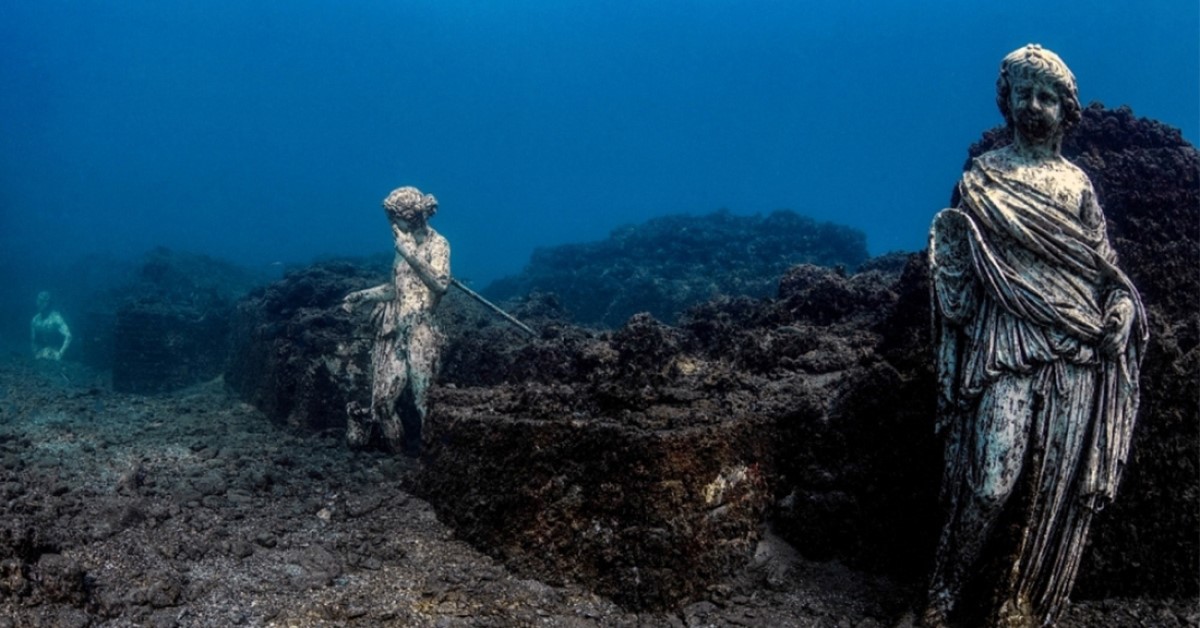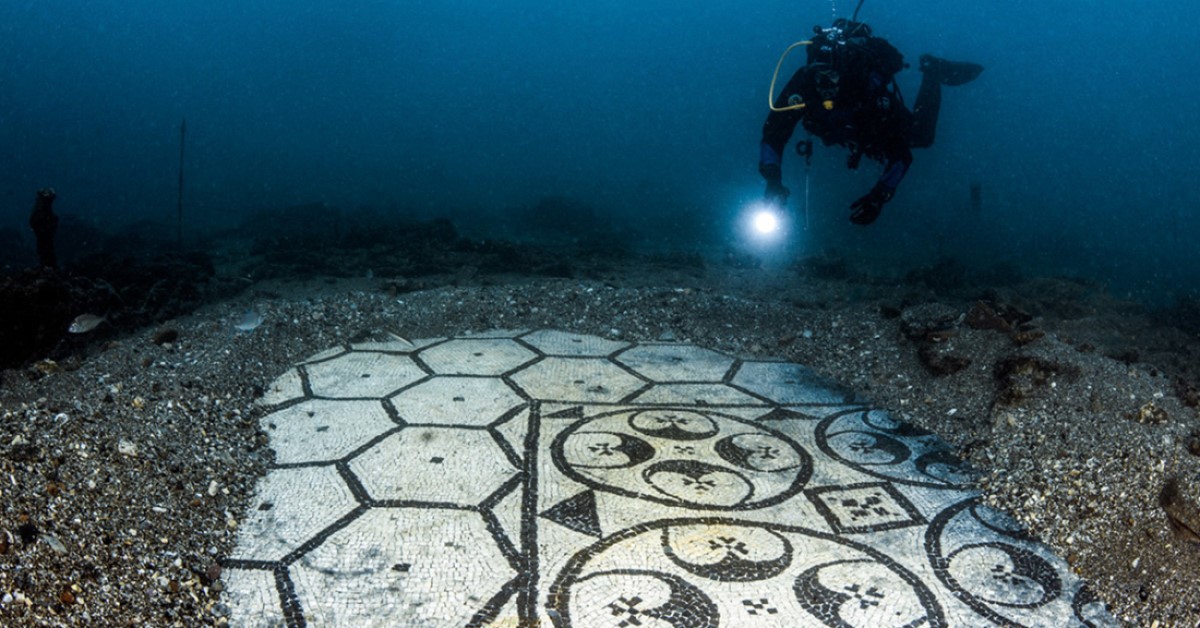Baia, Italy: Off The Beaten Path
On the northwest shore of the Gulf of Naples, there’s an enchanting glimpse of history in the depths of the sea: The Archeological Marine Park of Baia. What was once a thriving holiday resort for the ultra-wealthy Romans, Baia was later partially submerged due to volcanic activity. With an otherworldly sense of awe and quiet, explorers can snorkel or scuba dive to view the intricate mosaics, marbled floors, eerie statues, and imperial baths.

From 100BC to 500AD, Baia was a destination spot for the super-rich; it was deemed more fashionable than Capri or even Pompeii. Roman socialites constructed luxury summer villas that included ornate tile floors, grand columns, and beautiful murals. Down the street, these high caliper Romans would seek out mineral baths that were set atop local hot springs. They were truly living in extravagance.
But opulence and vice sometimes go hand in hand. Along with the riches and fame, Baia was notorious for its rumors of scandal, corruption, and hedonistic offerings. Sextus Propertius characterized Baia as a “den of licentiousness and vice,” while Seneca the Younger describes it in one of the moral epistles as a “vortex of luxury” and a “harbor of vice.” With a dark side to its fame, Baia was attacked during the Barbarian Invasions, as well as throughout the 8th century. It was later abandoned in 1500AD for recurrent malaria spikes.
As it was located in the Phlegraean Fields, an active volcanic area, the town eventually began sinking into the sea, with the lower part of town being fully submerged by the end of the 8th century. Today, this previously elite city includes above ground ruins (Parco Archeologico delle Terme di Baia), as well as a series of 5 underwater sites that range from 5-13 meters in depth. An incredible submerged city, Baia is an adventure waiting to happen.


